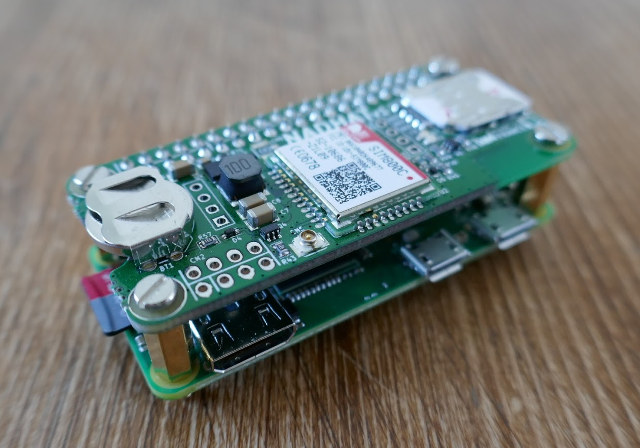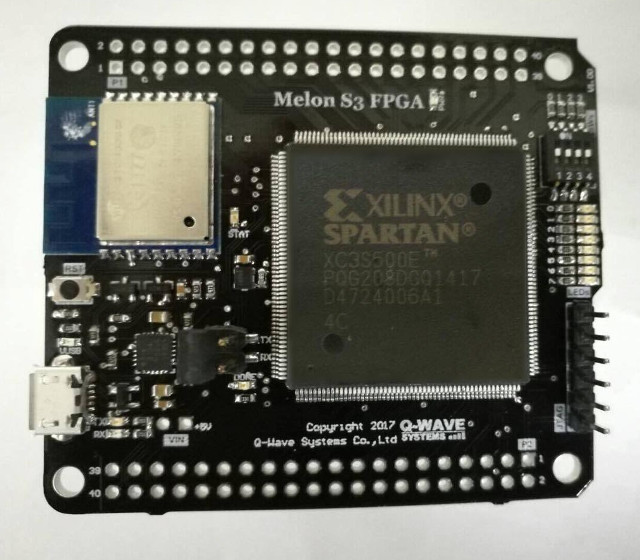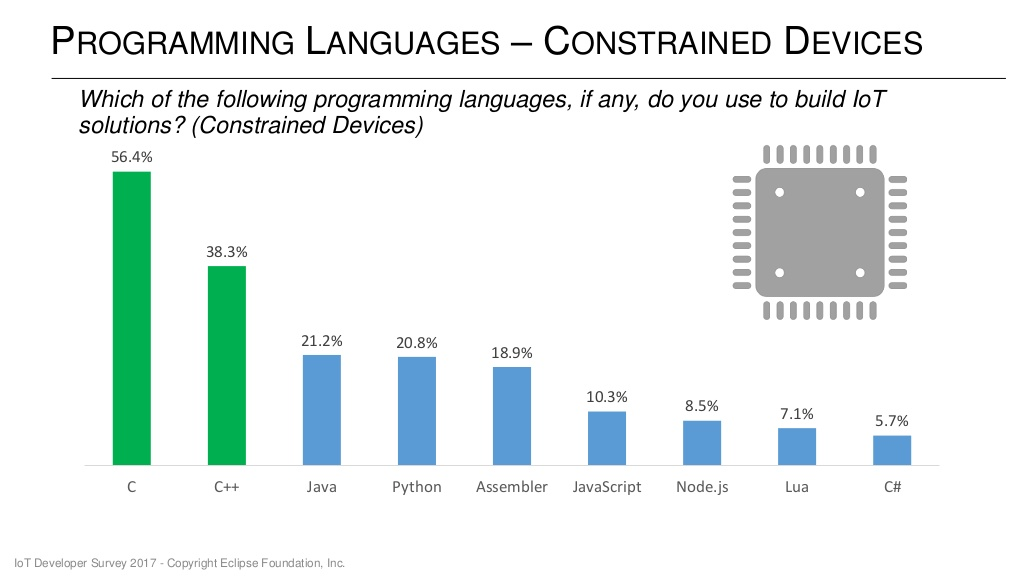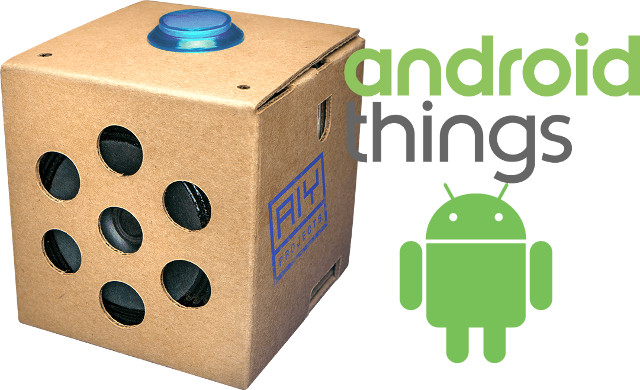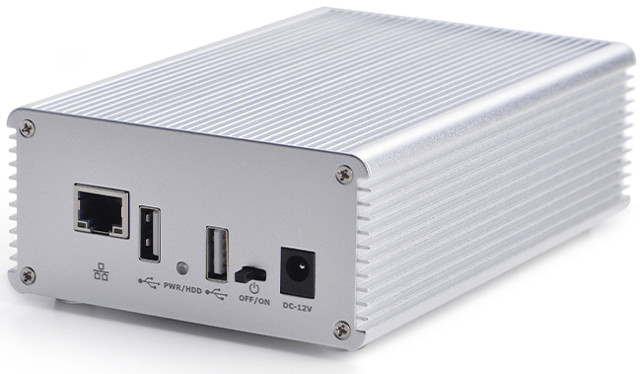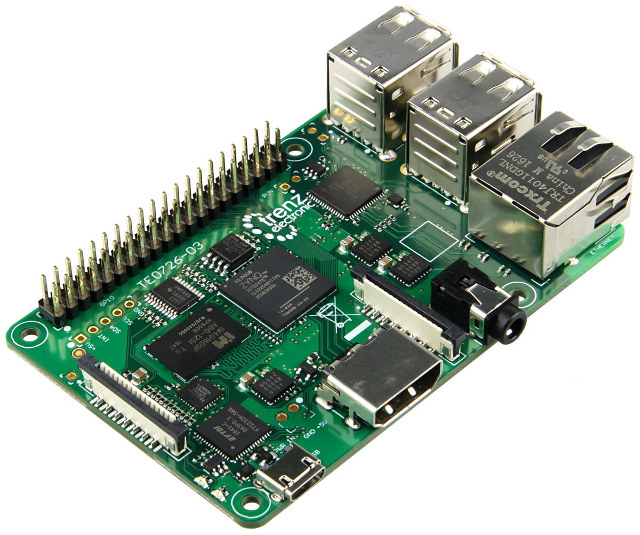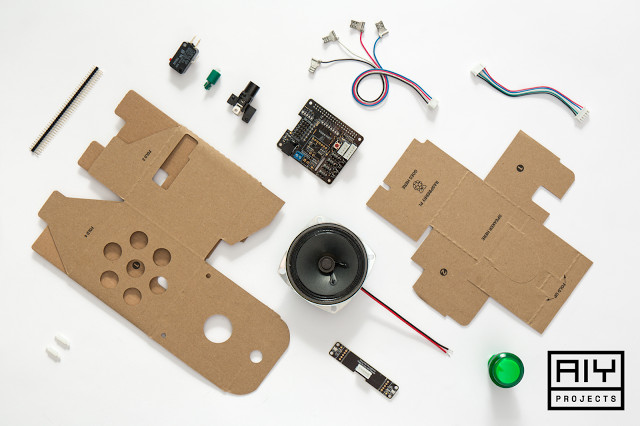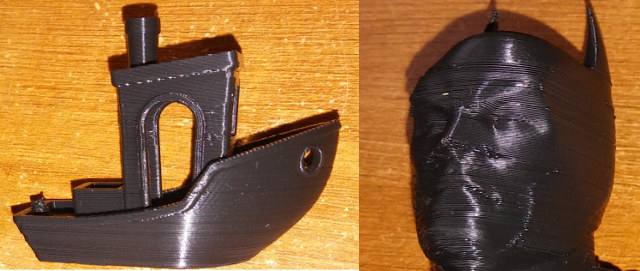Making Raspberry Pi HATs for fun seems to have become a popular hobby, as after checking out Leon Anavi’s Infrared pHAT a little while ago, I’ve just come across Nadhat add-on board with GSM/GPRS and Bluetooth 3.0 made by Frederic Pierson in his spare time. Nad stands for “Network Access Device”, and the device comes with the following specifications: SIM800C module with 2G GSM/GPRS support, and Bluetooth 3.0 + EDR (but Bluetooth is not mentioned by the developer, so it may not work right now) SIM card slot + connector for GSM antenna CR1225 cell battery slot for RTC 40-pin header provided, but not soldered Dimensions – 65 x30 mm, compatible with Raspberry Pi Zero He explains that he made the board himself and the PCBs “are leaded reflow processed and do not follow regulations in Europe”. You’ll also have to provide your own GSM antenna and CR1225 battery. He’s […]
Melon S3 FPGA Arduino & Raspberry Pi Compatible Board is Programmable over WiFi using ESP8266 WiSoC
Q-Wave Systems, an embedded systems company based in Thailand, has designed Melon S3 FPGA board powered by a Xilinx Spartan 3E FPGA with WiFi connectivity added through a ESP8266 module programmable with the Arduino IDE , and featuring two Raspberry Pi compatible headers. The FPGA bitstream can be updated over WiFi, and does not require a JTAG debugger. Melon S3 FPGA specifications: FPGA – Xilinx Spartan XC3S500E FPGA with 500K gates, 73Kb Distributed RAM, 4 Digital Clock Manager (DCM), 20 Multipliers (18×18), 360 Kb Block RAM WiFi module – WROOM-2 with Espressif ESP8266 32-bit MCU @ 80 MHz supporting 802.11 b/g/n WiFi. Storage – 4MB SPI flash in total with 1MB for ESP8266, 3 MB for FPGA Expansion – 2x 40-pin Raspberry Pi compatible headers; 3.3V tolerant Debugging – Onboard USB-UART Silicon Labs CP2104 for configuration, debugging and power; 6-pin JTAG port for debugging/programming Misc – 8x Users LEDs, 4x […]
Top Programming Languages & Operating Systems for the Internet of Things
The Eclipse foundation has recently done its IoT Developer Survey answered by 713 developers, where they asked IoT programming languages, cloud platforms, IoT operating systems, messaging protocols (MQTT, HTTP), IoT hardware architectures and more. The results have now been published. So let’s have a look at some of the slides, especially with regards to programming languages and operating systems bearing in mind that IoT is a general terms that may apply to sensors, gateways and the cloud, so the survey correctly separated languages for different segments of the IoT ecosystem. C and C++ are still the preferred languages for constrained devices, and developers are normally using more than one language as the total is well over 100%. IoT gateways are more powerful and resourceful (memory/storage) hardware, so it’s no surprise higher level languages like Java and Python join C and C++, with Java being the most used language with 40.8% […]
Android Things Developer Preview 4 Released with Google Assistant SDK Support
Earlier this month, Google released a preview of the Google Assistant SDK that works on boards running Debian like the Raspberry Pi 3, and even launched AIY Project Voice Kit for the later. You can now play with Google Assistant on Android Things as the company has just released Android Things Developer Preview 4 with support for Google Assistant SDK. The operating systems works on any Android Things certified devices, but the example instructions for Google Assistant API on Android Things also include steps to use Raspberry Pi 3 board together with AIY Projects Voice kit. The developer preview 4 also adds I2S to the peripheral I/O API and is demonstrated in the aforementioned example, and new hardware support with NXP i.MX7D based Pico Board equipped WiFi & Bluetooth, Ethernet, USB ports, an audio jack, and an I/O expansion port. Android Things DP4 also brings the ability for developers to […]
NAS Kit v1.2 Gets Support for NanoPi NEO 2, an UAS Capable USB to SATA Bridge, and an RTC Battery
Last month, FriendlyELEC launched a NAS Dock kit for NanoPi NEO board, but they’ll already removed it from their store. That’s because they have a new version NAS Dock v1.2 that also supports NanoPi NEO 2 with Gigabit Ethernet, replaces JMicron JM20329 by UAS capable JMicron JMS567 USB 3.0 to SATA bridge, and adds an RTC battery. The rest of NAS Dock Kit v1.2 specifications remain the same: 1-bay NAS Dock expansion board with JMicron JMS567 USB 3.0 to SATA bridge SATA connector for 2.5″ HDD drive Extra USB host port On/off switch, and dual color status LED Header to connect NanoPi NEO / NEO 2 board 12V DC power input Dimensions – 151 x 89.7 mm NS-120 aluminum enclosure (154 x 100 x 47.5 mm, 414 grams) Heatsink set for NanoPi NEO / NEO 2 4x M3 6mm screws, 8x M2.5 6 mm screws Four rubber pads Front and back covers […]
Meet Zynqberry, a Xilinx Zynq FPGA Board with Raspberry Pi 2/3 Form Factor
Earlier this year, I wrote about Trenz Electronic’s Xilinx Zynq Ultrascale+ system-on-module, but I’ve just found out I missed another interesting product from the company. The ZynqBerry is a board powered by Zilinx Zync Z-7007S or Z-7010 ARM + FPGA SoC with Raspberry Pi 2/3 form factor. ZynqBerry specifications: SoC Xilinx Zynq XC7Z007S-1CLG225C (Z-7007S) single core ARM Cortex-A9 MPCore up to 766MHz + FPGA with 23K logic cells Xilinx Zynq XC7Z010-1CLG225C (Z-7010) dual core ARM Cortex-A9 MPCore up to 866 MHz + FPGA with 28K logic cells System Memory – 128 or 512 MB DDR3L Storage – 16 MB Flash SPI flash + micro SD card slot Video Output – HDMI, MIPI DSI interface Audio Output – HDMI, 3.5mm audio jack (PWM audio only) Connectivity – 100 MBit Ethernet via (LAN9514 USB Hub with Ethernet USB – 4x USB 2.0 host ports Camera – MIPI CSI-2 interface Expansion – 40-pin Raspberry […]
AIY Projects Voice Kit Transforms Raspberry Pi 3 Into Google Home, Comes Free with Raspberry Pi Magazine
We’ve just reported about the preview release of Google Assistant SDK that works on the Raspberry Pi 3, and other boards with a microphone, speakers, and access to Internet. The Raspberry Pi foundation and Google have now made it even easier, as they launched AIY Projects Voice Kit with a Google Voice HAT, a speaker, a stereo microphone Voice HAT board, a button, a few cables, and a cardboard case. You’ll just need to add your own Raspberry Pi 3, follow the instructions to assemble kits, load and setup the software. Once this is all done, you’ll be able to press the top button, asking anything you want to Google Voice, including the weather. Price? Sort of free, as it comes with MagPi 57 magazine, where you’ll also find detailed instructions for the kit. Google AIY Projects got its name from a mix between (DIY) and artificial intelligence (AI), and […]
Creality CR-10 3D Printer Review – Part 2: Tips & Tricks, Octoprint, and Craftware
Hey Karl again with part 2 of my 3D printing experience with the CR-10, after the first part describing CR-10 3D printer setup and first prints. The intent is to share my experiences with the CR-10 with the perspective from a noob. I have to say if you are hard heading like I am, and do a lot of research but don’t fully listen to what you are reading, you are going to waste a lot of filament and time. I spent a couple hours a day for weeks with trial and error and watching the printer and how it works adjusting about a billion settings and testing. I am hoping this will help any current or future CR-10 owner speed up the learning curve. Measuring Filament Diameter The single biggest thing to improve my print quality I found was measuring the filament. I read about this several times but […]


